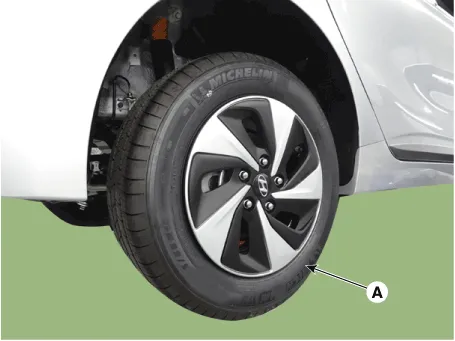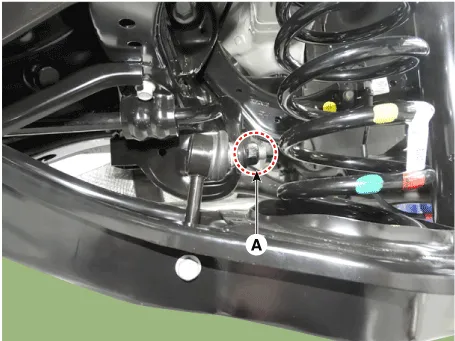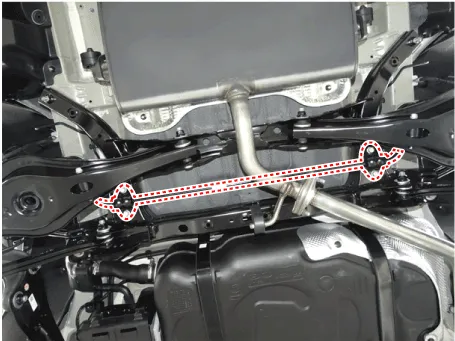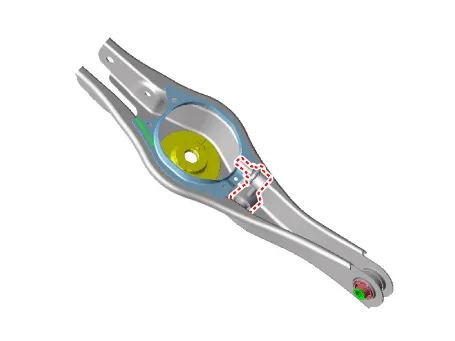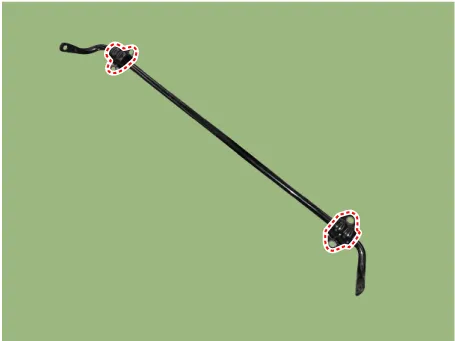Hyundai Ioniq (AE): Rear Suspension System / Rear Stabilizer Bar. Repair procedures
| Removal |
| 1. | Loosen the wheel nuts slightly. Raise the vehicle, and make sure it is securely supported. |
| 2. | Remove the rear wheel and tire (A) from the rear hub.
|
| 3. | Loosen the nut and then remove the rear stabilizer link (A).
|
| 4. | Loosen the mounting bolt and then remove the stabilizer bar from the rear cross member.
|
| 5. | Remove the stabilizer link from the rear lower arm.
|
| 6. | Remove the bushing.
|
| 7. | Install in the reverse order of removal. |
| Inspection |
| 1. | Check the rear stabilizer bar for deformation. |
| 2. | Check the rear stabilizer link ball joint for damage. |
Removal1.Loosen the wheel nuts slightly.Raise the vehicle, and make sure it is securely supported.2.Remove the rear wheel and tire (A) from the rear hub.
Removal1.Loosen the wheel nuts slightly.Raise the vehicle, and make sure it is securely supported.2.Remove the rear wheel and tire (A) from the rear hub.
Other information:
Hyundai Ioniq (AE) 2017-2022 Service & Repair Manual: Auto Defogging Sensor. Repair procedures
Diagnosis With GDS1.The heating, ventilation and air conditioning can be quickly diagnosed failed parts with vehicle diagnostic system (GDS).※ The diagnostic system (GDS) provides the following information.(1) Self diagnosis : Checking the failure code (DTC) and display.
Hyundai Ioniq (AE) 2017-2022 Service & Repair Manual: Auto Defoging Actuator. Repair procedures
Inspection1.Turn the ignition switch OFF. 2.Disconnect the auto defogging connector. 3.Verify that the auto defogging actuator operates to the open position when connecting 12V to terminal 3 and grounding terminal 4. Verify that the auto defogging actuator operates to the close position when connected in reverse.
Categories
- Manuals Home
- Hyundai Ioniq Owners Manual
- Hyundai Ioniq Service Manual
- USB jack. Description and operation
- Front Seat Belt Buckle. Components and components location
- Body (Interior and Exterior)
- New on site
- Most important about car

